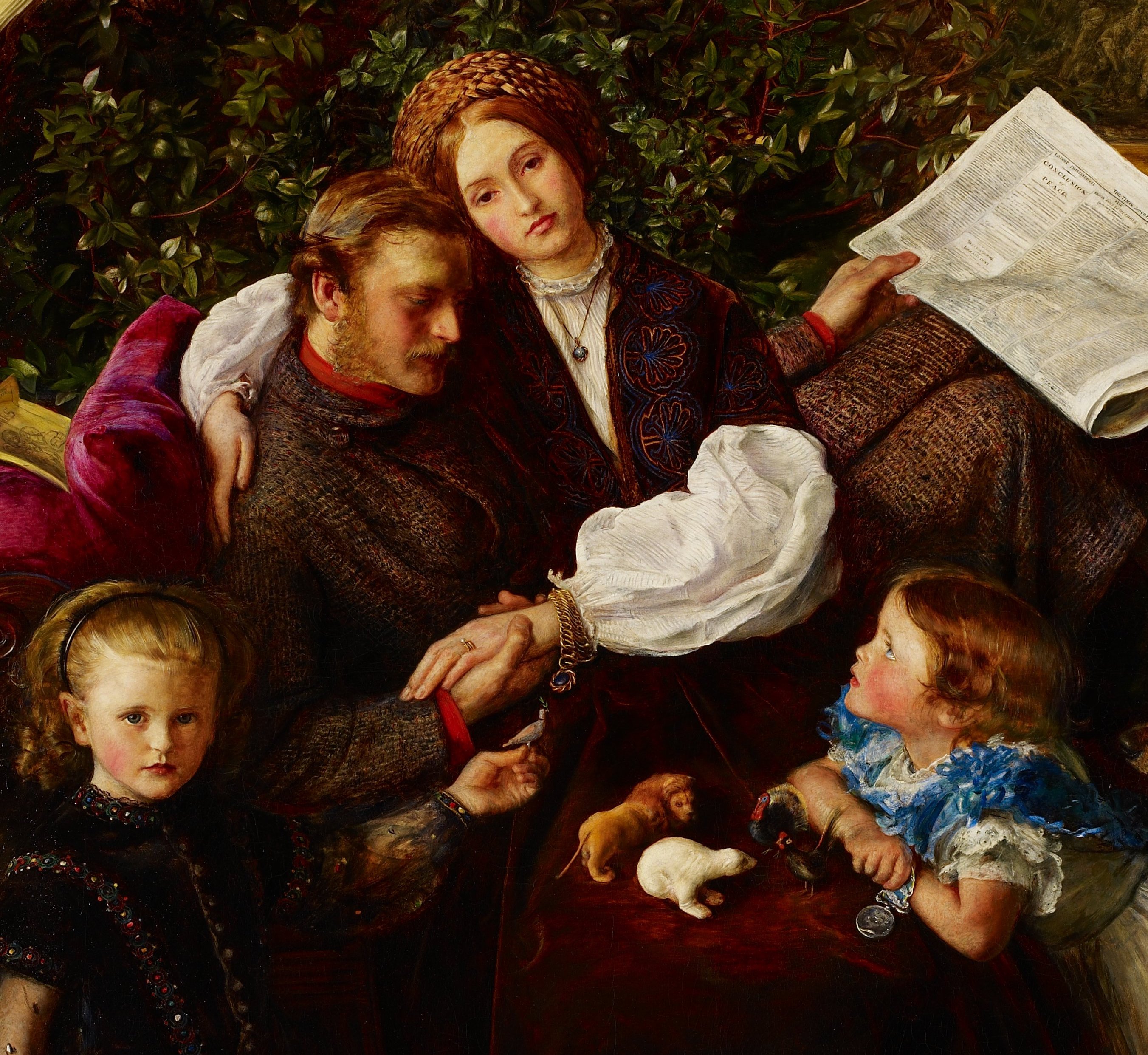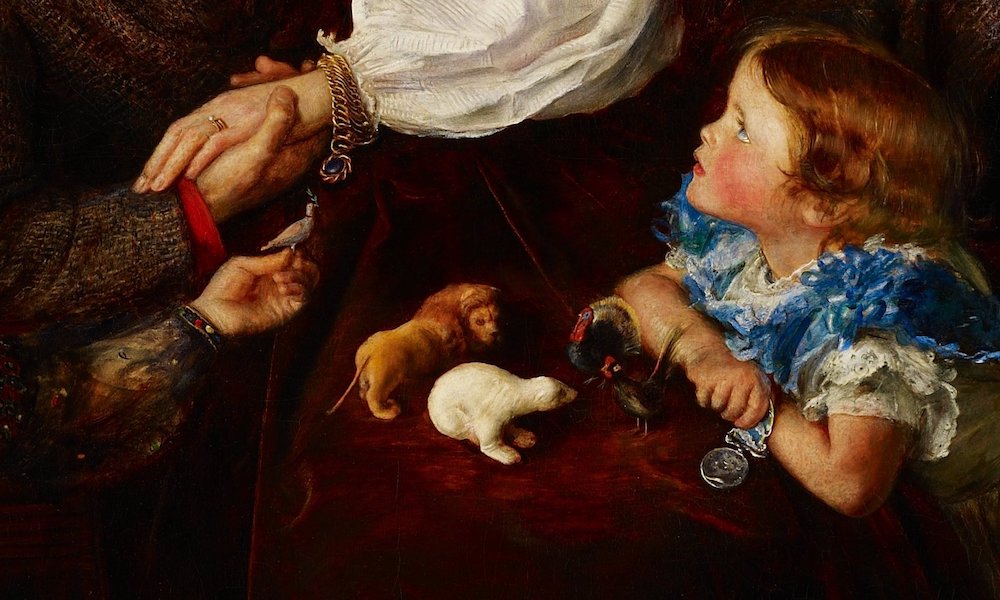

Peace Concluded by Sir John Everett Millais. 1856. Oil on canvas. 46 x 36 in. (116.84 x 91.44 cm) (canvas); 58 x 48 3/4 x 2 in. (147.32 x 123.83 x 5.08 cm) (outer frame, which is particularly fine). Collection: Minneapolis Institute of Art, Accession No. 69.48. Credit: The Putnam Dana McMillan Fund. Image identified as being in the public domain.
Marking the end of the Crimean War, this painting is anything but celebratory: the father of the family, reclining in his dressing gown — wounded or at least debilitated by the war — looks despondently downwards. He holds the newspaper aside: how happy could its announcement of peace have really made him? Could it have contained news of more casualties? What horrors has he seen? His wife has her arm around him, but she too is far from cheerful.

Close-up of the central part of the painting.
As for the children, the youngest daughter holds a war medal with a blue ribbon in one hand. Her father has no doubt been a war hero. But she looks up at him with a serious, concerned expression too, while the other daughter gazes solemnly directly at the viewer, one hand on the toy-box. Every detail here tells a story. With its jumble of miniature animals, including a tiger and an elephant, it clearly holds the contents of a Noah's Ark, and indeed the young girl has picked out and now holds up to her father the dove of peace, with an olive branch in its beak. The toy animals on her father's couch seem to represent the warring powers: the British Lion and the Russian Bear are prominent. But here is a promise of hope for the future.
It is all over, then. But is it really over, for this family? And for how long will the peace last? The Victorians were constantly at war in some arena or other, and Millais seems to recognise that the end of the Crimean War was no occasion for rejoicing. — Jacqueline Banerjee
Created 13 July 2023